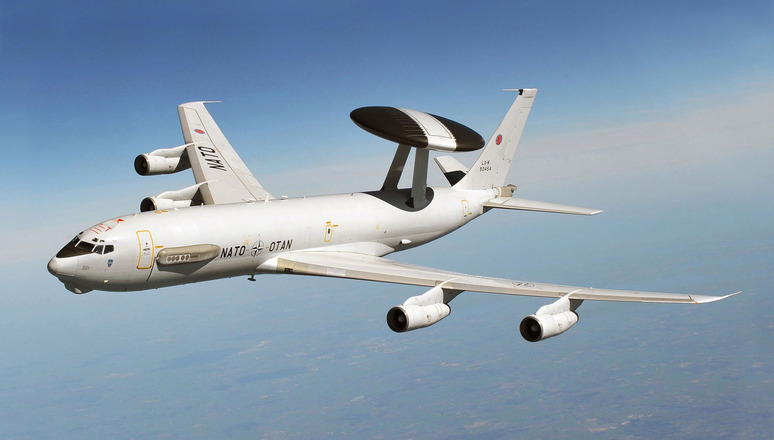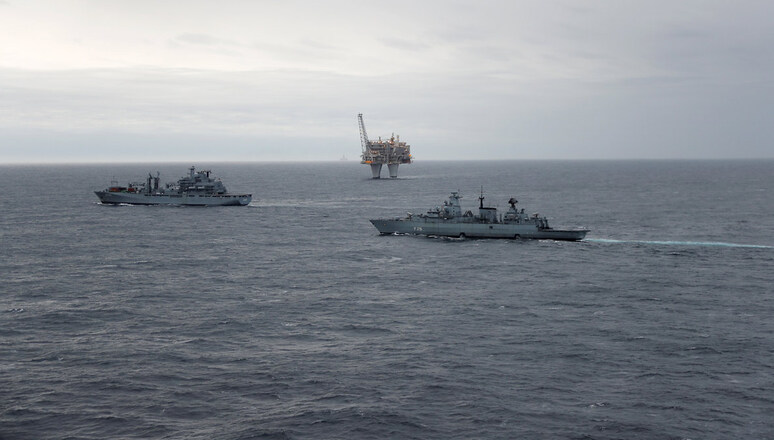BRUSSELS (World Report Studio News) - NATO Defense Ministers, in coordination with the Swedish Defense Minister, announced the Digital Ocean Vision on October 12, 2023. This initiative aims to enhance NATO's security by improving maritime situational awareness in the Baltic Sea, both above and beneath the water's surface. It will be primarily achieved through increased coordination among the ongoing national and Allied maritime surveillance programs, utilizing a range of assets, including satellites and autonomous devices, above and below the sea.
The Digital Ocean Vision is the latest in a series of security efforts by NATO following the contentious Nord Stream sabotage on September 26, 2022.
Defense efforts in the Baltic
The Nord Stream attacks consisted of a series of explosions that significantly damaged both of the Nord Stream pipelines under the Baltic Sea. As a result, the key Russian gas export route to Europe was disrupted, exacerbating the already high geopolitical tensions which began at the start of Russia's full-scale invasion of Ukraine seven months prior. Despite official investigations from three countries, who is responsible for the sabotage remains unknown.
Russia has refuted allegations of damaging its own pipelines, instead blaming “Anglo-Saxon” allies for the destruction of the infrastructure.
Caught largely off guard, NATO and the surrounding Baltic nations quickly launched the Critical Undersea Infrastructure Protection Cell and began to develop a roadmap to prevent similar incidents from occurring in the future. This Coordination Cell is a response group that aimed to monitor the pipelines and undersea cables that were deemed critically vulnerable to attacks at this moment.
Lieutenant General Hans-Werner Wiermann, a highly-respected former German military officer and the leader of the cell, stated in a press release that the Nord Stream sabotage highlights the “clear and present danger our critical undersea infrastructure faces.” He later added that the reliance on this infrastructure will only continue to grow as the demand for offshore wind will require more electricity to be transported via cables along the shore bed.
At the Vilnius Summit held in July earlier this year, NATO leaders reached an agreement to establish the Maritime Centre for Security of Critical Undersea Infrastructure as a part of NATO’s currently existing Maritime Command (MARCOM) within the United Kingdom. This unit is directly responsible for strengthening the maritime presence of NATO in the Baltic region, acting both as a deterrent and as the primary defense for NATO member states.

The Russian threat is still ongoing
Despite these efforts, NATO intelligence officials still indicate a “significant risk” that Russia or other unidentified actors could target critical infrastructure in both Europe and North America—primarily gas pipelines and undersea cables—in retaliation to Western involvement in Ukraine..
As Europe shifts away from Russian gas, Norway, which overtook Russia as Europe's largest gas supplier last year, has reported that it monitors Russian activities “closely” within its maritime boundaries, where a majority of its gas and oil platforms and pipelines are located. Any disruptions to these sources would be detrimental to the energy security of Europe and would give Russia leverage in diplomatic negotiations.
Internet cables represent another critical vulnerability. David Cattler, NATO’s Assistant Secretary General for Intelligence and Security, conveyed to reporters that “Few people are aware of just how dependent we are collectively on a limited number of fiber optic cables that form the internet spine and electronically link our continents.”
NATO reports that about 95% of the world’s internet traffic is carried by undersea cables, which operate at speeds around 200 terabytes per second. Out of the 400 total cables, 200 are considered critical to the international community. Cattler further noted, "These cables facilitate an estimated 10 trillion U.S. dollars in financial transactions daily, making them an economic cornerstone." The ease with which Russia could potentially threaten the West's internet connectivity is recognized as one of its most significant strategic advantages in the current geopolitical chess match.

 Gabriel Madej
Gabriel Madej